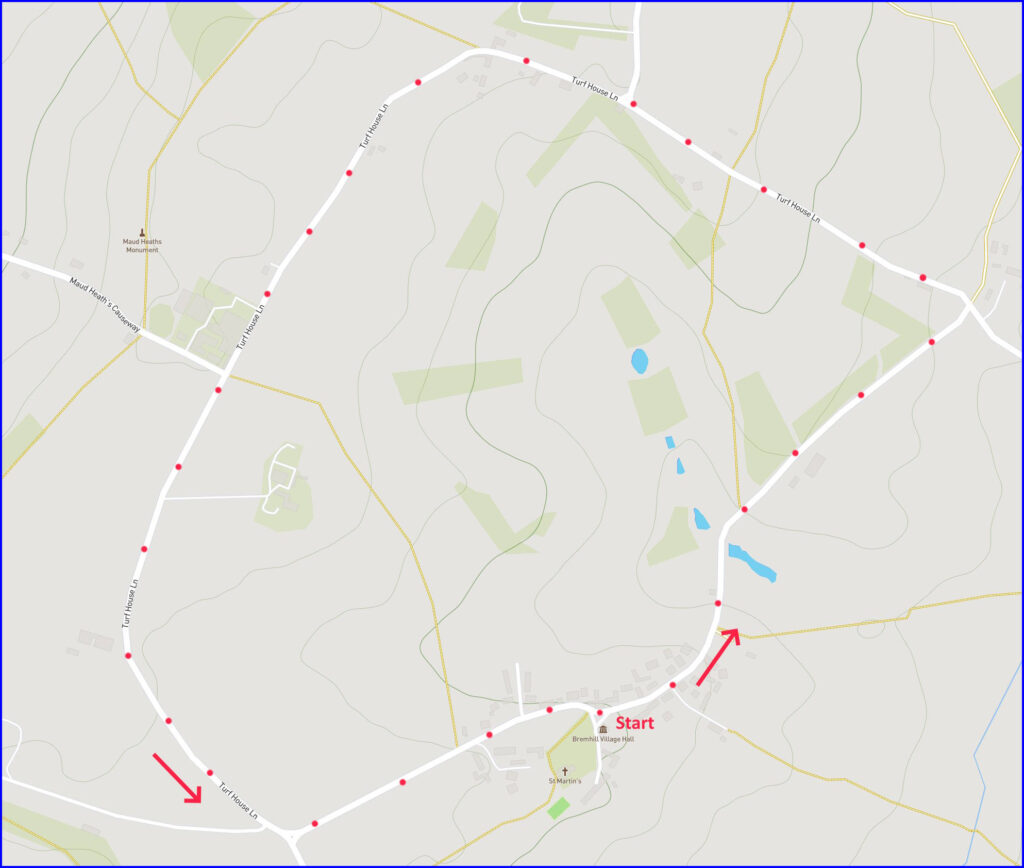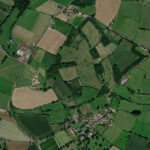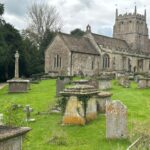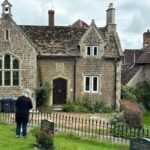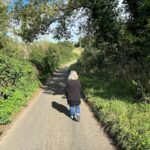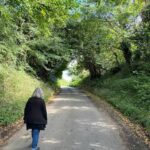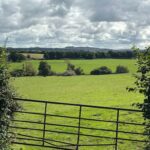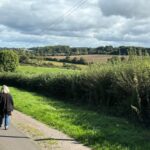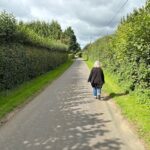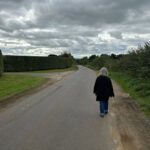A 2.5-mile, circular, walk starting from Bremhill: quiet country lanes. Click map to enlarge. Click here for an aerial view. Click here for a downloadable PDF guide of this page. (There is a GPX route option here for phone/tablet download. But only follow this link after watching this GPX help video). Friendly warning: all files relating to walks are published here on good faith but on the understanding that users must be responsible for their own safety and wellbeing.
The pictures below are in the order things were seen on this walk. Clicking on any one will enlarge it (and the slideshow)
The walk
For a circular walk, this is pretty close to a circle. It is all on quiet lanes: there are occasional vehicles but the lanes are straight and you should hear them coming well enough. Just going out of the village, note the abandoned well house on the right of the pavement. There are fine views of the Wiltshire countryside and few demanding slopes
Bremhill village
The village arose on land granted to Malmsbury Abbey by King AEthelstan around 935. At the time of the Domesday Book it was quite well populated. Less so now. It was largely rebuilt between 1872-5 with Bowood Estate cottages. It is rare to find a working farmyard in the heart of a village.
St Martin’s church dates from the Saxon period. A 13th century tower with 15th century renovations and restoration of the interior furnishings in the Victorian period. Outside the church is a medieval village cross and a former school (1846) with teacher’s house adjoining. It replaced an earlier school provided by the Marquess of Lansdowne but it finally closed in 1969.
As you leave the churchyard you will notice Bremhill Court, the former vicarage, It is a large building with a Victorian gothic look. Although it has a 15th century core and some 13th century fragments. While William Bowles was the rector (1803-44), he installed a large number of classical garden details (urns, grottos, caves and a lake), fashionable in the previous century but subsequently much mocked (some of these features still remain and some were originally looted from nearby demolished Stanley Abbey).
William Bowles
The best-known historical character from this village is the Victorian church rector, William Bowles. He was a friend of nearby Lord Lansdowne to whom he introduced a large number of literary intellectuals of the period. He was known to be eccentric yet attracted some admiration for his poetry (particularly from Coleridge and Wordsworth), This particularly applies to his sonnets that are still admired today (you can sample them here).
Unfortunately, much of his poetry is not that great. He was given to attaching epitaph doggerels to the tombstones in his churchyard – with some abandon. With help from Lord Lansdowne he created a column-with-statue memorial to Maud Heath (famous local who bequeathed the Causeway as a route to Chippenham market), and then adorned it with some pretty questionable verse. He published widely, including a ‘Life of Pope’ which was full of inaccuracies and precipitated arguments with Byron.
The village is the focal point for a lively local history group from which more can be learned. On their website you will find a large number of video recordings of talks and discussions that they have organised. Details of Bowles’ life and work can be found in this book.
